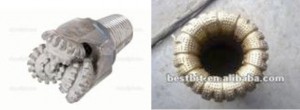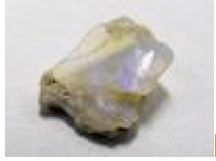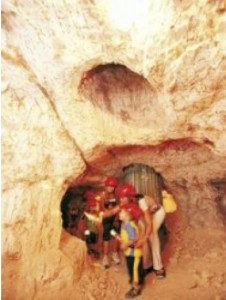Today’s offering is from the same Dispatch as last week – 20 January 2013, in fact it is the first part. The first sentence is latin, for those whose education is as poor as mine.
Amicos romanos popularium commoda mihi auribus vestris,
Like the owner of Pangur Bán the cat, (google it sometime, you won’t be disappointed) I love words.
Oil exploration 101 featured in the last Dispatch. (Publisher’s note – we may publish this at a later date) Having just returned from Adelaide where I was subjected to a follow up ‘procedure’, I am now ready to present the second lecture.
The eccentric billionaire (more accurately described as a weirdo) Howard Hughes’ fortune was derived initially from his father having patented (in 1908) the tri-cone drilling bit that revolutionised oil drilling. Three conical rollers have got teeth the length of which varies with the hardness of the rocks to be drilled. For really hard sedimentary rocks ‘button bits’ are used which have tungsten carbide button shaped inserts on the three cones. For the latter, pressure fracturing the rocks is used rather than gouging and chipping as for the ‘tooth bits’. Volumes have been written on drill bit design.
Whilst drilling using these roller bits is much faster (and hence cheaper) than core drilling (which uses doughnut shaped drill bits encrusted with industrial diamonds- hence the term ‘diamond drilling’- quite distinct from ‘drilling for diamonds’) the samples consist of rock chips rather than the solid cores from which much more information can be gleaned.
Only anticipated ‘target zones’ are usually cored. When a zone of interest is identified subsequent to having cheaply and quickly been drilled through, a ‘procedure’ known as ‘side-wall coring’ can be used. A string of explosive charged metal tubes is lowered by a cable until the target zone is reached and the metal tubes are shot into the side-wall obtaining small (but much larger than the usual rock chips) cores of rock which can then be examined, analysed and tested. One could call this a ‘geopsy’ (google- 19,600 ‘results’ that don’t appear to use the word as I just have) analogous to my biopsy (google- 23,100,000 ‘results’).
Doctor, Doctor, give me the news….
http://www.youtube.com/watch?v=NQ7WyP_qCZk
My sojourn in Adelaide was rewarded by a new appreciation of the beauty of the English word ‘benign’(from the Latin interjection: Bene! good).
Many years ago we visited the Umoona Opal Mine in Coober Pedy. A German lady guided us through the workings and explained the mining ‘procedure’. When a tourist pointed out some ‘opal potch’ (an indication of possible nearby valuable opal) in the mine wall, she told us “Vee must not mine zee pillows”. This was highly dangerous she told my flummoxed family. She repeated that the pillows should be left intact or the whole structure was in danger of collapsing. As a geologist with a smattering of German I was able to interpret for my family. The guide was referring to the ‘pillars’. I do wonder how many tourists left Coober Pedy perplexed by the imperative not to mine zee‘pillows’.
Potch…
Part of Umoona Mine (note the pillow-bottom right).
The reader is invited to revisit last week’s offering to see where this story went. It can be accessed here.




Pingback: Weekly Wrap 7 May 2013 | pcbycp